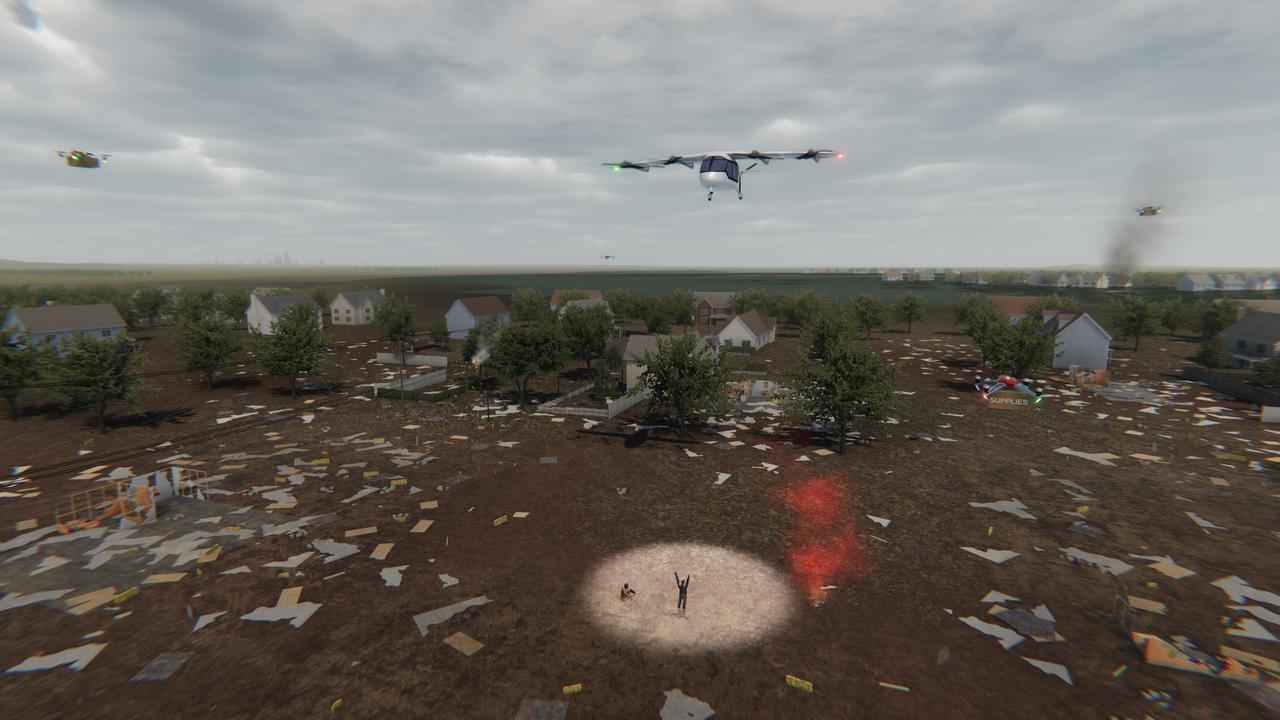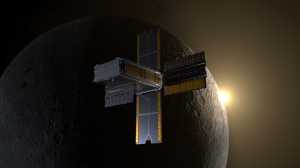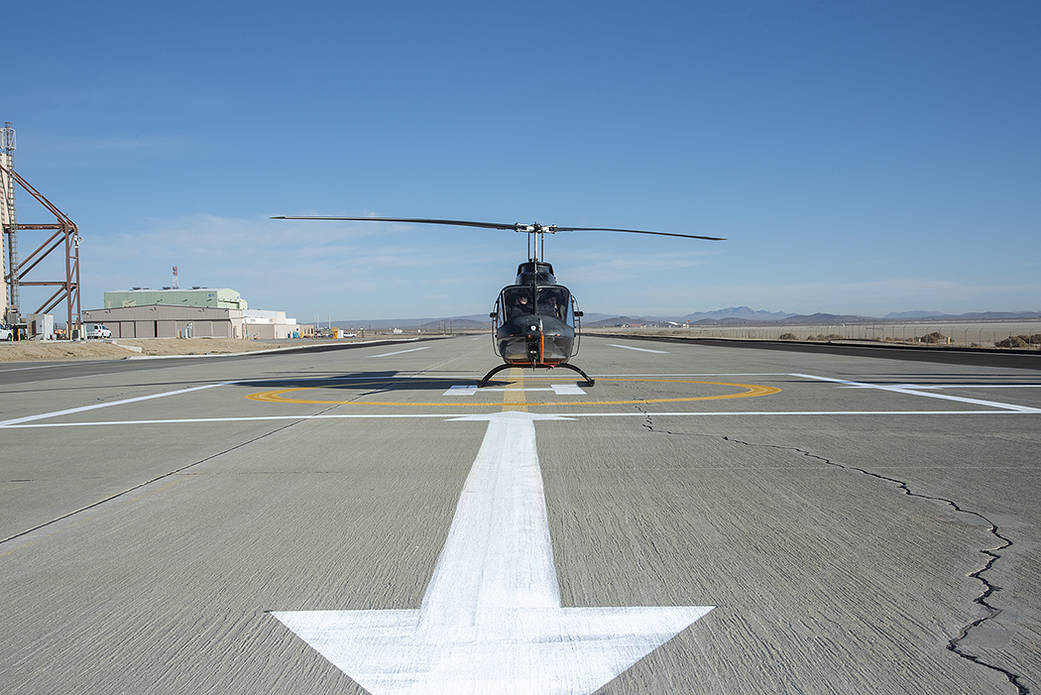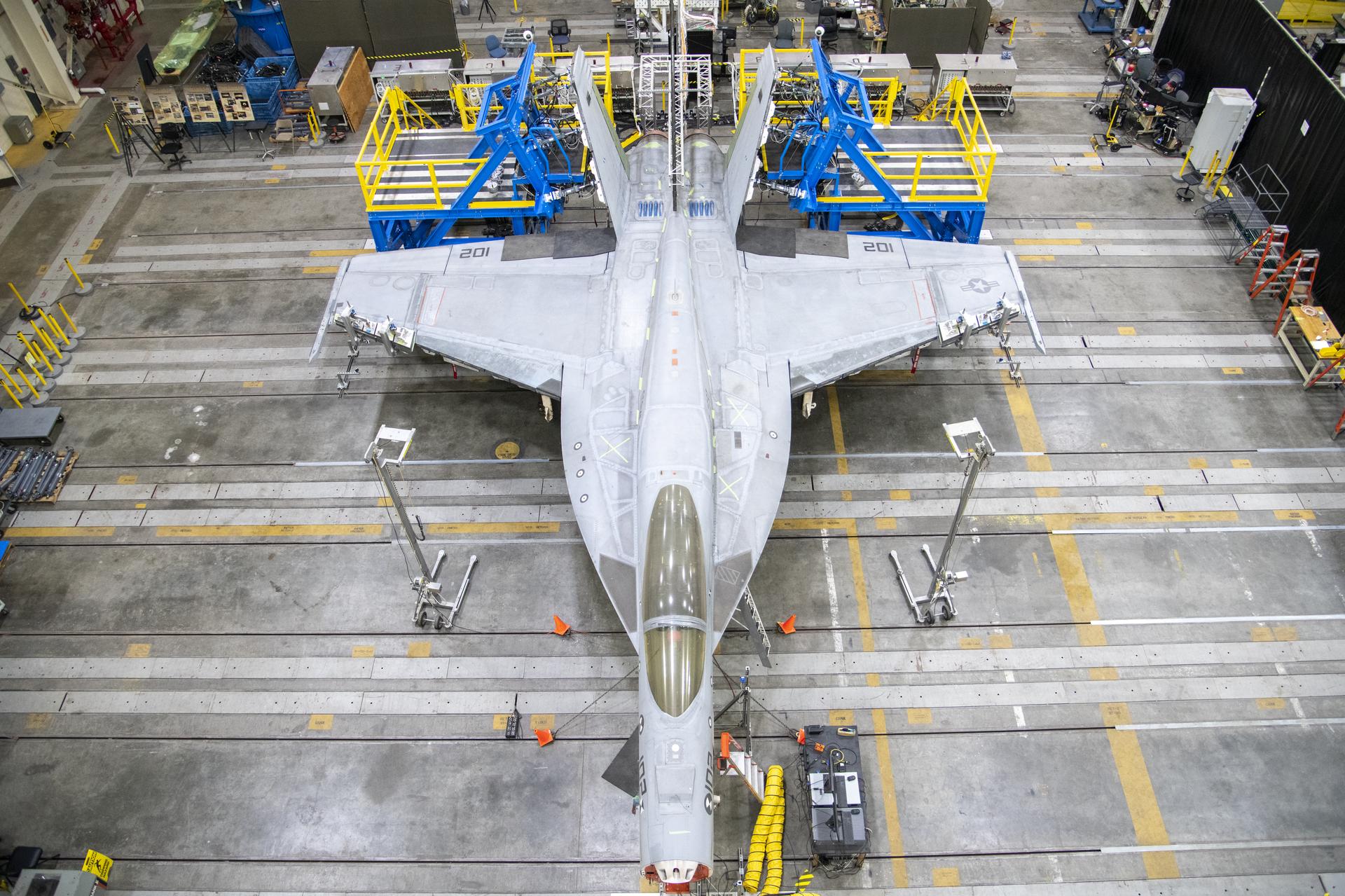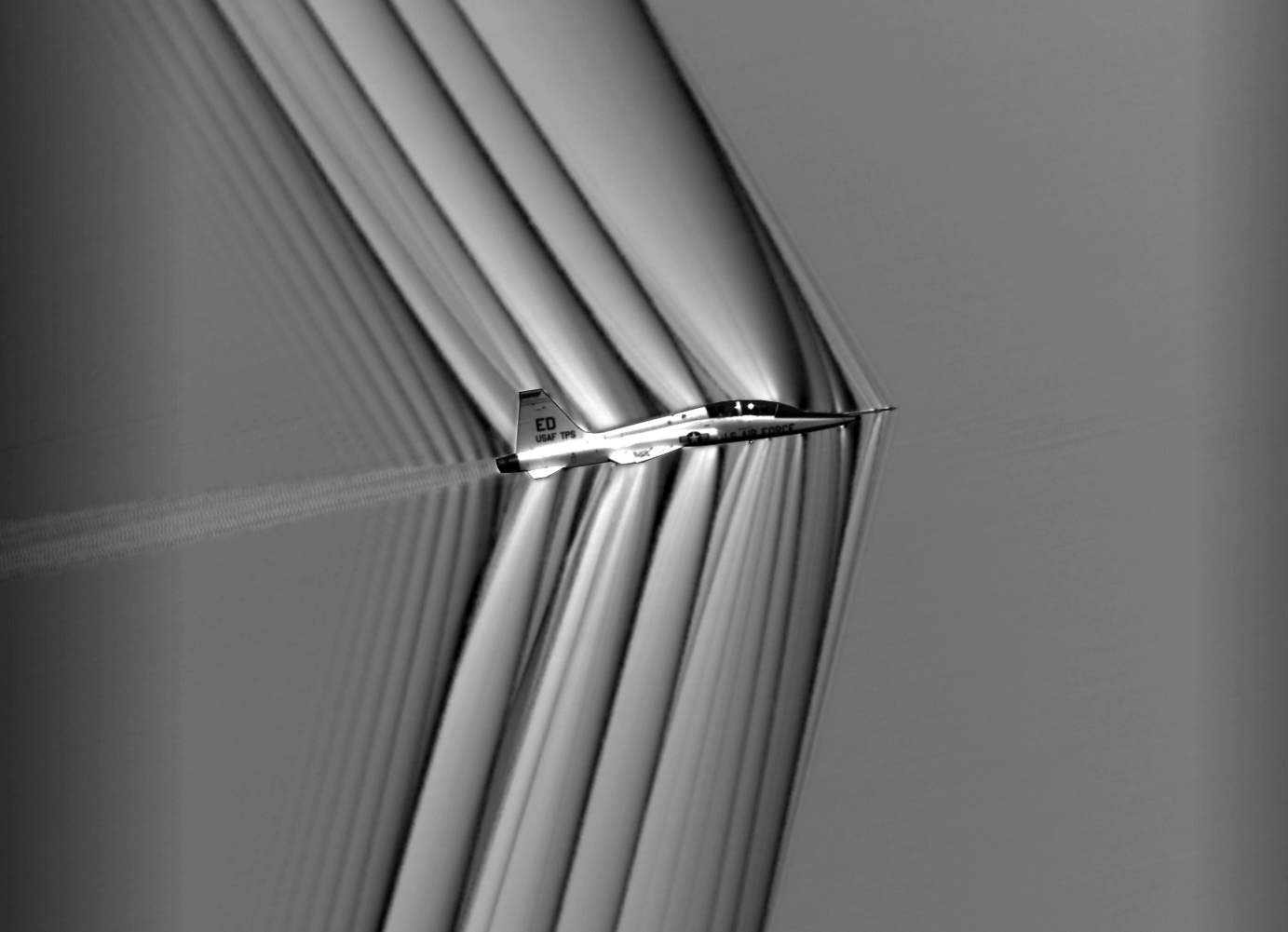Read this feature in Spanish here.
Hurricanes, floods, fires, earthquakes – our planet faces many of these natural disasters each year that can quickly become emergency response and rescue efforts. NASA’s Advanced Air Mobility or AAM Mission is researching how AAM can help when disasters strike.
AAM has the potential to aid in disaster relief, assist in firefighting missions and provide supplies to hard-to-reach areas during an emergency event. This could look like a drone carrying supplies to local houses and hospitals when a city is flooded. Potentially, it’s an air vehicle being used to rescue people trapped in a building or residential area after an earthquake that is otherwise difficult to reach. This could even look like firefighting teams using remotely piloted drones to drop fire retardant and spray water to fight fires in dangerous areas, along with moving people away from the fires quickly in emergency situations.
As part of the AAM Mission, NASA’s Scalable Traffic Management for Emergency Response Operations, or STEReO, project is already looking at how drones can assist in wildfire management. Last year, the project sent drones into several California fires to collect thermal data about the fire for the firefighting teams and deployed tools to track the aircraft in real-world settings.
Firefighting teams across the state like the California Air National Guard already use technology like the remotely piloted MQ-9 aircraft with infrared cameras that can fly above a fire and see through smoke and ash. Several organizations also currently use helicopters for search, rescue, and fighting fires. The goal is to add new AAM aircraft into the mix for various uses and to increase safety for those in the communities and those fighting the fires.
Several projects under the AAM mission are working on different elements to help make AAM a reality in emergency operations. This includes work on automation, landing and take-off locations like vertiport and vehicle design, and airspace design to keep everyone safe while flying in the skies together. It’s going to take an effort between government agencies, industry, and the public to build new highways in the sky.
NASA’s vision is to map out a safe, accessible, and affordable new air transportation system alongside industry partners and the Federal Aviation Administration. Once developed, passengers and cargo will travel on-demand in innovative, automated aircraft across town, between neighboring cities, or to other locations typically accessed today by car.



























